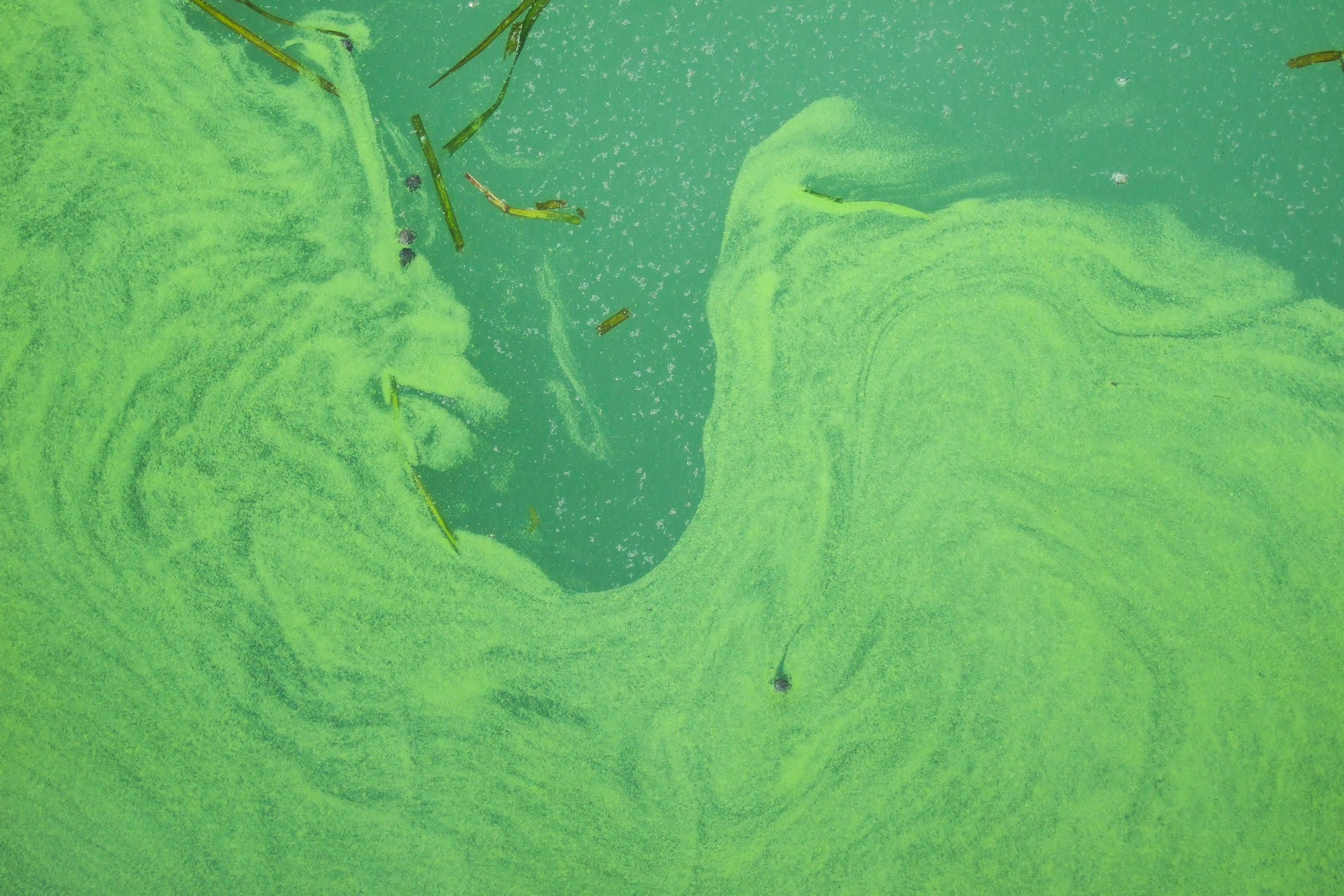Is Green Slime as Bad for Your Health as it Looks?
Algae blooms are expected to form again this summer on western Lake Erie, and people want to know whether the toxin in those blooms is making them sick.
Back in 2014, nearly 500,000 people in the Toledo area were told to avoid their tap water for three days because it had been contaminated with that toxin, called microcystin.
Exposure to it is known to cause flu like symptoms – vomiting, diarrhea, and nausea.
LISTEN: Your Environment Update for July 13, 2017
Tom Henry, a reporter at the Toledo Blade newspaper, covers Lake Erie and the environment. He says doctors at the time weren’t able to attribute those symptoms to microcystin because there’s no test for it.
“They understand what the symptoms are,” he says, “but there’s not a specific way of saying it’s because you’ve been exposed to algal toxins.”
Experts at the University of Toledo Medical Center, Wayne State University, and the Centers for Disease Control are working to develop a test to diagnose people exposed to algal toxins. They call it a critical step in combating a global problem.
The threat from microcystin is one reason that experts are urging Congress to continue funding for Great Lakes programs.
To hear more about President Trump’s proposal to eliminate the $300 million Great Lakes Restoration Initiative, as well as funding for the National Oceanic and Atmospheric Administration’s National College Sea Grant program, check out our podcast, Trump on Earth.
Reporting by Julie Grant
Tiny Particles of Pollution Increase the Risk of Premature Death in Older Americans
Long-term exposure to certain kinds of air pollution increases the risk of premature death in Americans over 65 years old. That finding holds true even at levels of air pollution below national standards. That’s according to a study in The New England Journal of Medicine from the Harvard T.H. Chan School of Public Health. Francesca Dominici is the study’s principal investigator, and a professor of biostatistics at Harvard.
She and her team examined Medicare claims records for 60 million Americans over a seven-year period. They focused on ozone and fine particulate matter — the tiny particles of pollution that we can inhale.
“One of the important aspects of this study was to collect and link an enormous amount of very granular data on exposure to pollution which we were able to assess up to the zip code of residents of almost every U.S. citizen older than 65,” Dominici says.
The team compared that information with socio-economic status, health history and behavioral risk factors.
Dominici says particulate matter can penetrate deep into the lungs and cause inflammation, and lead to cardiovascular and respiratory problems. She says they found some people are more susceptible to health problems from air pollution than others.
“People that have lower-income, African-American[s] and also male[s] have a much higher risk of that; specifically among African-Americans, which was pretty surprising to us. We found that the risk was three times higher than the general population,” she says.
Dominici argues it’s the government’s responsibility to make sure we’re cutting down on air pollution.
“How they can take action is making sure we are transitioning out from coal-fired power plants, regulating traffic, and all of the steps we’ve been putting into place to combat climate change — [these actions] will immediately provide a benefit in terms of cleaning our air.”
Reporting by Rebecca Williams



